Homelessness
Ending homelessness in the Riverbed
We consider homelessness an intersectional issue with environmental stewardship. Working toward a trash-free river is an obvious element of The San Diego River Park Foundation’s mission. The leap to actively engaging with ending homelessness in the riverbed is the next logical step.
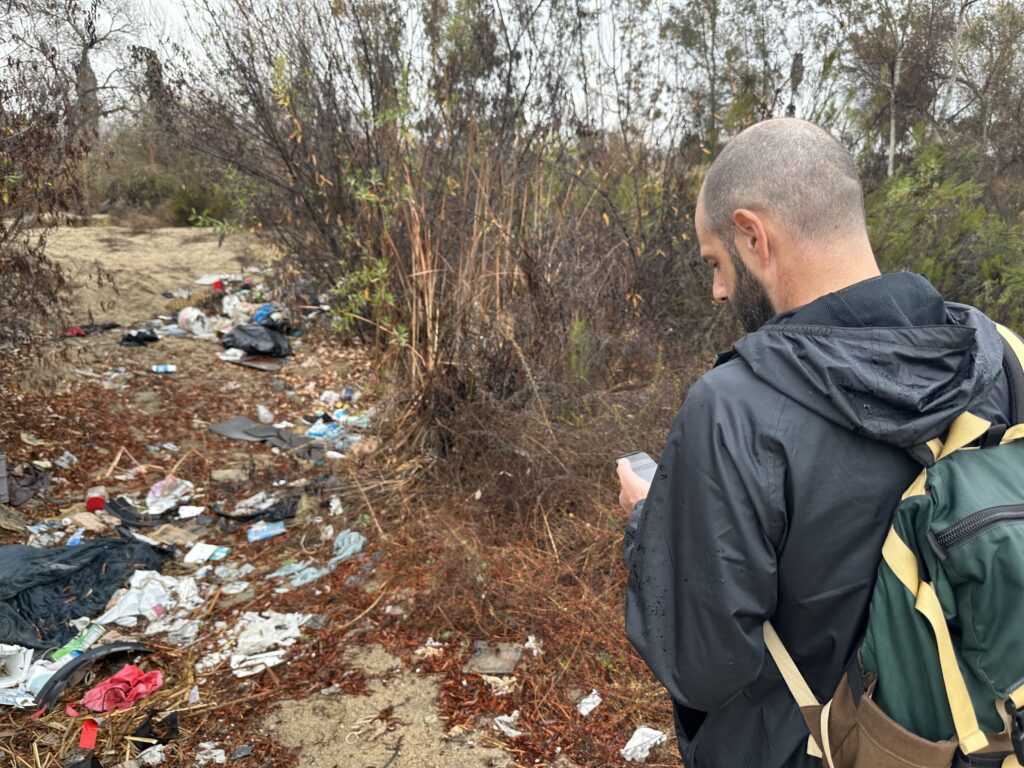
Trash, homelessness, and river health
We work in the many different urban riparian areas, tributaries, and canyons that make up the unique ecological topography of the San Diego River. Each year, an estimated 1 million pounds of trash will enter these sensitive habitats, carrying with it the less visible but still harmful bacteria and other toxic compounds. Despite the robust trash removal efforts by SDRPF volunteers, other NGOs, landowners, and municipalities, new trash enters the river as fast as it can be removed.
In 2016, the River Assessment Field Team (RAFT) was created, empowering staff, volunteers, and interns to conduct surveys of the river to better understand the trash in the riverbed. The information collected not only informs clean-up strategies, but has enabled us to pursue data-informed solutions to the root causes of this trash.
Through RAFT, we have learned that over 65% of the trash mapped is related to people living in areas not for human habitation, without access to sanitation or proper trash disposal, and with only makeshift shelter from the elements.
A social and environmental challenge
People living in the riverbed may be less visible to their surrounding community, but they are also harder to reach by service providers, medical crews, and emergency responders, further from existing homeless resource infrastructure, and at higher vulnerability to environmental hazards like fires and floods.
Not only is this a critical social issue, but these sensitive environments cannot bear the burden. The San Diego River’s important ecosystem functions are negatively impacted when we fail to provide adequate options for people experiencing homelessness and fail to protect our river.
We believe that ending homelessness in the riverbed is possible. Compassionate solutions for people can also result in positive environmental outcomes.
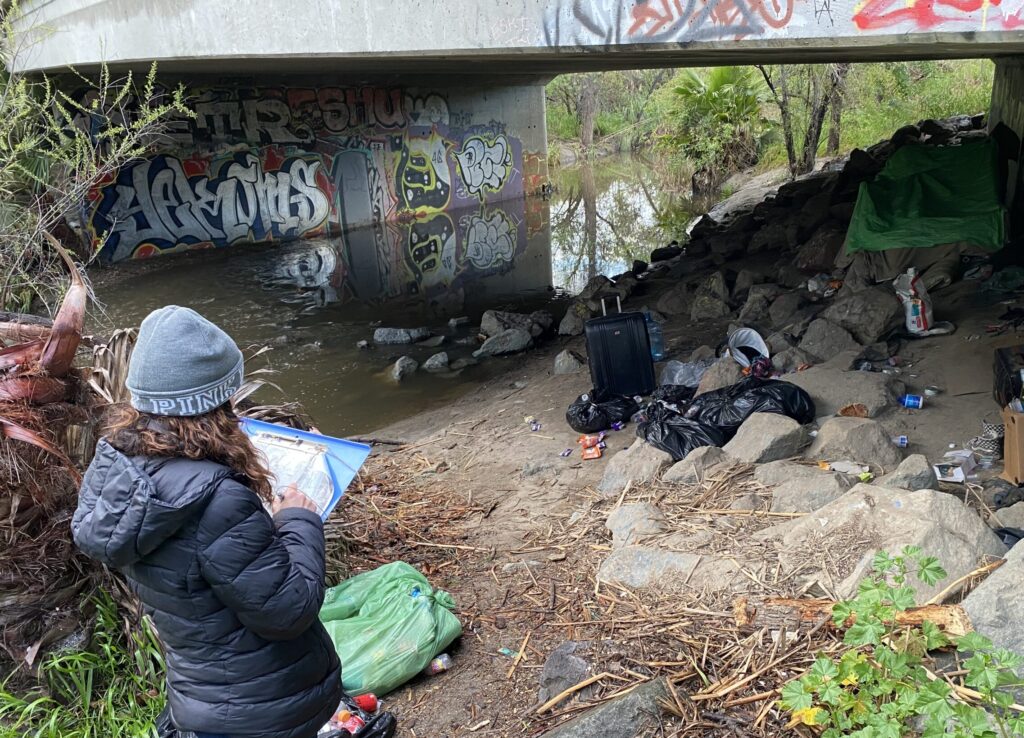
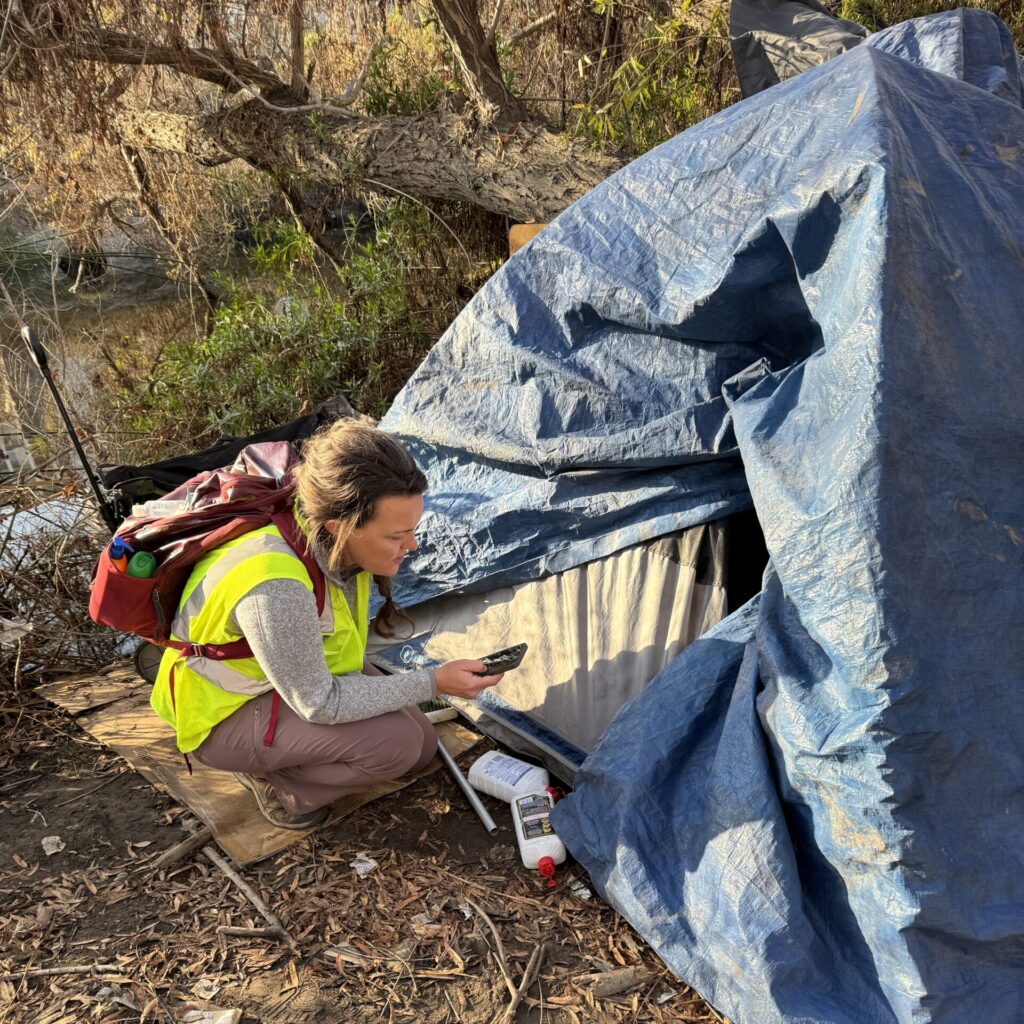
How we are contributing to a solution
Data and boots on the ground allow us to give the river a voice, and make those living in the riverbed less invisible. This work includes:
- Twice weekly RAFT survey events to document encampments in the riverbed, make face-to-face connections with people experiencing homelessness and distribute care kits
- Using the rapport built through these interactions to make referrals and share knowledge with service providers
- Using our knowledge of the river to help train outreach workers, street medicine providers, and housing navigators to get to people in need
- Mobilizing volunteers and partners to do notifications at low-lying camps before potentially life-threatening flooding events
- Tracking trends over time to better understand what influences the population of people living in the riverbed
We invite you to get involved!
You can help us make a difference!
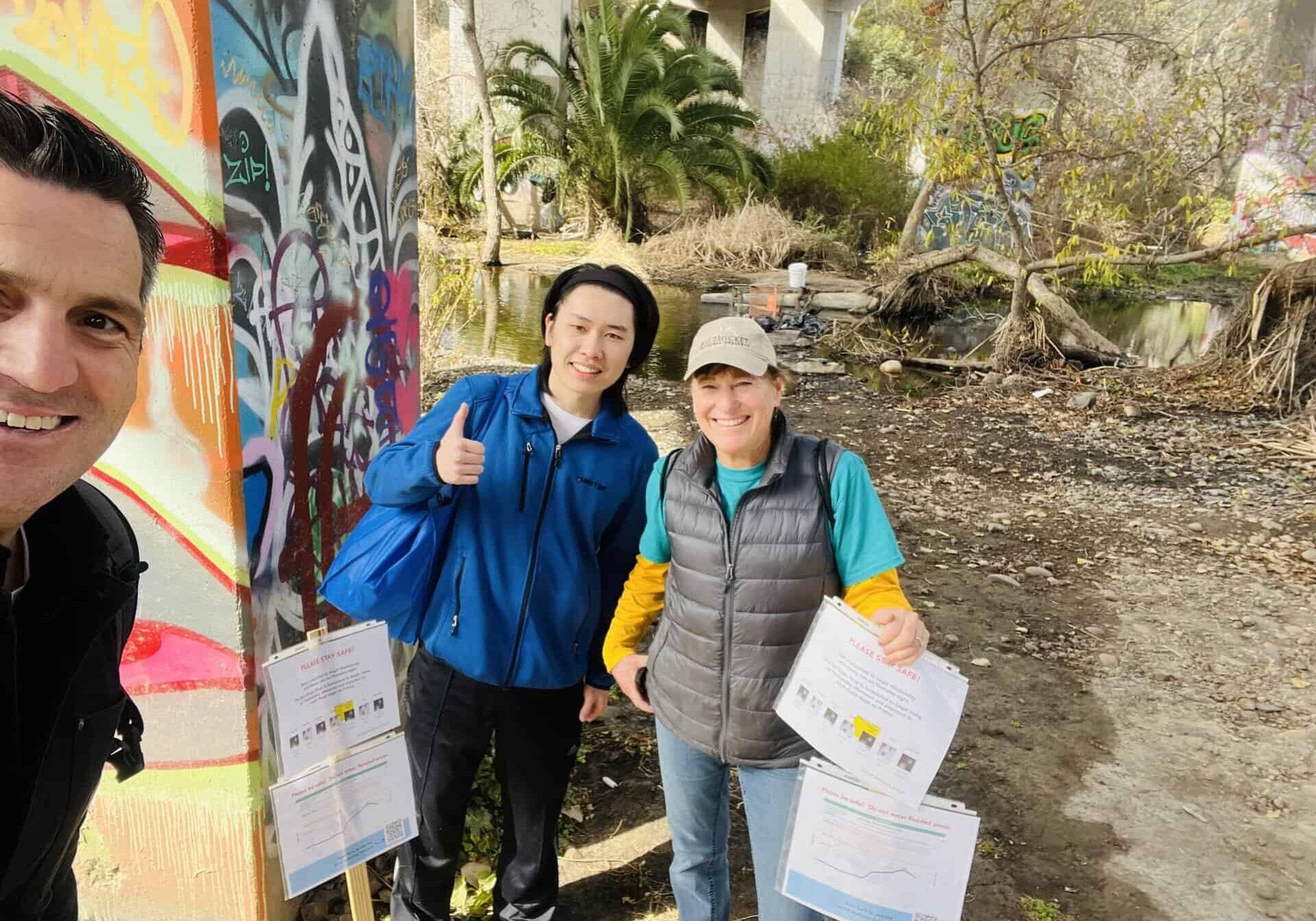
Sign up for the Flood Notification Team
Before storms, we use our data and flooding forecasts to identify which areas of the riverbed are likely to flood and which encampments may be in harm's way. We need to mobilize volunteers quickly, so you can help us be ready for the next flood by adding your name to the notification list. Trained leaders will guide volunteers to help distribute care kits and warn people of upcoming flooding.
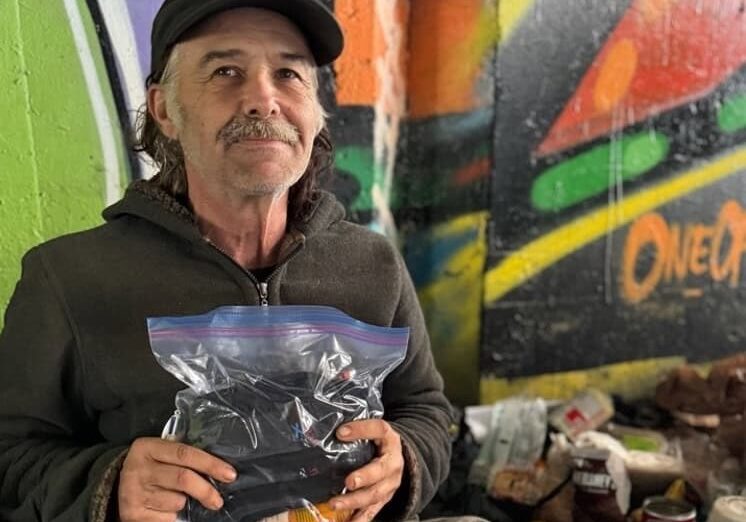
Virtual Drive: Care Kit Supplies
A great way to support this work with instant impact is to purchase an item like ponchos, sanitizing wipes, granola bars, socks or another item from our Amazon wishlist. Any item you purchase will be handed out by our volunteer teams to people living in the riverbed to help us build rapport and trust... which in turn, helps us connect people with resource providers and ultimately move out of the riverbed.
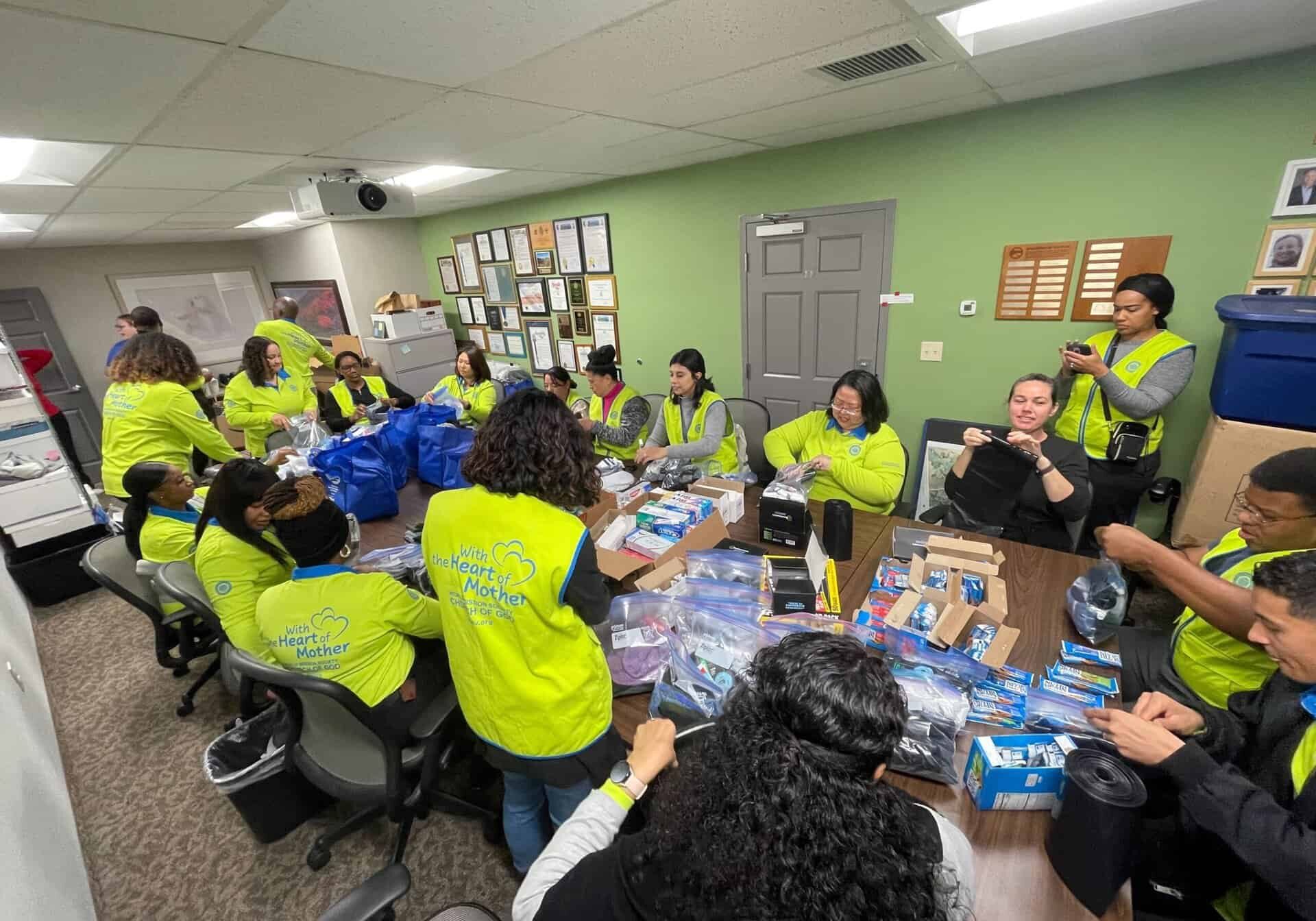
Help Assemble Care Kits
Join our next care kit packaging party at the office! We try to keep at least 100+ care kits prepped and ready to go at all times, so when supplies get low, we meet at the office to assemble items donated from our wishlist into care kits to distribute to people experiencing homelessness. These happen approximately every other month. Sign up to be notified of the next opportunity! Perfect for those who want to help but can't always make it to trek out into the riverbed.
Statement of values about people experiencing homelessness
- We treat all people with respect and compassion.
- We take a non-confrontational approach.
- We use people-centered language. This emphasizes the individual, prioritizing their personhood over their condition, such as: person experiencing homelessness, person experiencing a substance use disorder. “Unhoused” and “unsheltered” are also acceptable terms. We avoid language that implies a personal or moral failing.
Position on people living in the riverbed
- The riverbed is not an appropriate place for people to live, for their own safety and the protection of sensitive habitats.
- But we also believe that people must have a place to go to leave the river, and we believe in advocating for and supporting investment in long-term, people-focused solutions.
